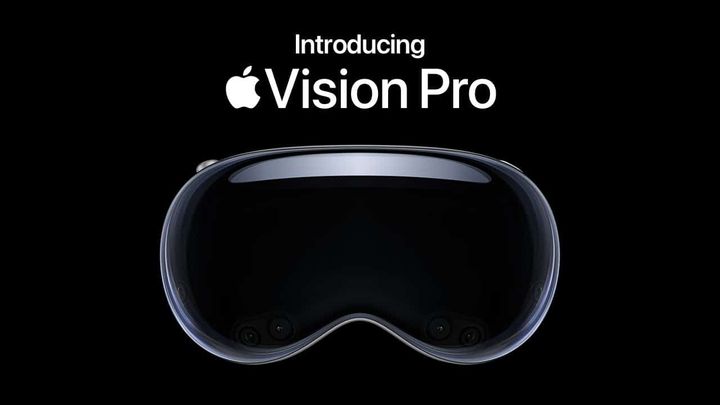Take a step into the unknown with RISC-V chip design - a powerful and open source instruction set architecture that has changed the way we think about chip design. Read more here!
RISC-V chip design is revolutionizing the world of processor technology. An open source instruction set architecture, RISC-V offers powerful features that offer unprecedented levels of performance and flexibility to embedded systems and other applications. Learn more about this revolutionary approach to chip design and its potential impact here.
What is RISC-V?
RISC-V chip design is revolutionizing the world of processor technology. An open source instruction set architecture, RISC-V offers powerful features that offer unprecedented levels of performance and flexibility to embedded systems and other applications. Learn more about this revolutionary approach to chip design and its potential impact here.
Simple Explanation
RISC-V is a type of computer chip that's really special because it's designed to be easy to use and can be customized for lots of different uses.
Think of it like a puzzle - when you put the pieces together in a certain way, you get a computer chip that can do all kinds of things, like play games, run programs, and do calculations really fast.
What makes RISC-V special is that it's like a puzzle where you can mix and match the pieces to make it just right for what you need it to do. It's also designed to be really simple, so it's easy for people to work with and understand.
So, in short, RISC-V is a special kind of computer chip that can be customized to do lots of different things and is designed to be easy to use and understand.
Key Features
RISC-V is an open-source instruction set architecture (ISA) for microprocessors, designed to be simple, scalable, and adaptable.
- Open-source: RISC-V is an open-source ISA, which means that anyone can use it, modify it, and contribute to its development.
- Modular design: RISC-V has a modular design that allows for a wide range of configurations, from simple microcontrollers to high-performance processors.
- Reduced instruction set: RISC-V is a reduced instruction set computing (RISC) architecture, which means that it uses a small number of simple instructions to perform complex operations.
- Scalable: RISC-V is scalable, which means that it can be used in a wide range of applications, from low-power embedded devices to high-performance servers.
- Adaptable: RISC-V is adaptable, which means that it can be customized to meet the specific needs of different applications and industries.
- Growing ecosystem: RISC-V has a rapidly growing ecosystem of developers, manufacturers, and organizations that are working to develop and promote the architecture.
In general, RISC-V presents a flexible and adaptable alternative to proprietary ISAs, with the potential to spur innovation and lower prices across a variety of sectors and applications.

Benefits of Using RISC-V Over Other Processors
RISC-V offers a host of advantages over traditional processors, such as superior performance and flexibility, as well as lower costs for manufacturers. For example, developers can customize the instruction set to suit their needs without having to go through the complicated process of designing their own microprocessor cores from scratch. Additionally, RISC-V is open source, so manufacturers are able to build upon an existing platform rather than creating a unique one. This helps reduce development time and cost. Finally, by eliminating many hardware components used in traditional processors, designers can save money on manufacturing.
How to Get Started With RISC-V Chip Design
If you’re interested in getting started with RISC-V chip design, the best way is to familiarize yourself with the instruction set. Fortunately, there are several books, web courses and other resources available to help you learn about this powerful open source architecture. Once you understand the basics of RISC-V chip design, you can start exploring tools and software development kits that allow you to program and create working chips. Additionally, it’s important to join communities of like-minded individuals looking to learn more about RISC-V so that you can get guidance from experienced professionals and stay current on developments related to the technology.
Basic step to get started with RISC-V, a bit technical
- Learn the basics: Start by learning the basics of RISC-V architecture and programming. There are many resources available online, including tutorials, videos, and documentation.
- Choose a development board: To begin experimenting with RISC-V, you'll need a development board that supports the architecture. Some popular options include the HiFive1 from SiFive, the ULX3S from Radiona, and the Kendryte K210 from Sipeed.
- Set up your development environment: Once you have a development board, you'll need to set up your development environment. This typically involves installing a toolchain, which includes a compiler, linker, and other tools for building and testing RISC-V code.
- Start programming: Once your development environment is set up, you can start writing RISC-V code. You can use a variety of programming languages, including C, C++, and assembly language.
- Experiment and learn: As you become more familiar with RISC-V, you can experiment with more complex programs and explore the full range of capabilities of the architecture. You can also explore the many applications of RISC-V, from embedded systems to high-performance computing.
Challenges and Potential Drawbacks of Using RISC-V
While RISC-V is proving to be a powerful technology, it's important to note that there can be challenges and potential drawbacks as well. For one, writing code and debugging in this architecture can be difficult, especially because the instruction set is still relatively new and toolsets have yet to be fully developed. Additionally, some companies worry that depending on open source RISC-V could leave them exposed to security issues or intellectual property breaches. That being said, the benefits offered by RISC-V -- namely its low cost of entry and scalability -- make it an attractive option for many chip design projects.
The Future of RISC-V in the Tech World
The potential applications of the RISC-V instruction set architecture are seemingly endless, and its adoption by leading technology companies is sure to continue in the future. As these companies make use of this new technology, they'll likely develop toolsets that help alleviate any potential issues that may arise, such as debugging and security concerns, and make invaluable contributions to chip design. With RISC-V's versatile framework in place and a dynamic programming environment, developers have unprecedented power when it comes to creating chips for cutting-edge products.
RISC-V is an open-source instruction set architecture (ISA) that is designed to be more flexible and customizable than traditional proprietary ISAs.
Future directions for RISC-V
- Increased adoption in embedded and IoT devices: RISC-V's small size and low power consumption make it well-suited for use in embedded systems and IoT devices, where energy efficiency and cost-effectiveness are critical.
- Competition with traditional ISA vendors: As RISC-V gains traction in the market, it may begin to compete with traditional ISA vendors, such as ARM and Intel. This could lead to increased innovation and lower costs for consumers.
- Development of specialized chips: RISC-V's flexibility and modularity make it well-suited for developing specialized chips, such as those for artificial intelligence or cryptocurrency mining.
- Expansion into the server market: RISC-V's ability to scale to large numbers of cores and support for virtualization make it a potential contender in the server market, where it could compete with traditional x86-based processors.
- Advancements in software and tools: As the RISC-V ecosystem grows, there will be a greater demand for software tools and development environments to support the architecture. This could lead to advancements in areas such as compilers, operating systems, and development tools.
Ultimately, it is expected that further improvements in hardware and software, as well as the rising desire for more adaptable and customized computing systems, will influence the direction of RISC-V. It's conceivable that when technology develops further, RISC-V will find imaginative new uses across a variety of sectors and use cases.
Read about other emerging technologies.
Key Developments
The open RISC-V instruction set architecture and its hardware and software ecosystem are the focus of RISC-V International, a global organization for open hardware standards. In addition to investing in open-source RISC-V processors and setting up a $1 billion fund to encourage the creation of new products, Intel has joined RISC-V at the Premier membership level. While Deloitte Insights has addressed how the RISC-V open source chip architecture promises reduced costs and wider access, its future in the market is anything from certain, SiFive has launched a potent new RISC-V portfolio to satisfy the needs of digital automobiles.
Companies have been placing their bets on RISC-V in light of the chip shortages, with Microchip introducing their PolarFire SoC, which is RISC-V-based, and India kicking up the Digital India RISC-V (DIR-V) initiative for next-generation microprocessors. RISC-V hardware design has a bright future ahead of it thanks to rising backing from both new businesses and well-established corporations.
RISC-V Blog
https://riscv.org/news/risc-v-blog/RISC-y business: Could open chip standard RISC-V gain traction against dominant incumbents?
https://www2.deloitte.com/us/en/insights/industry/technology/technology-media-and-telecom-predictions/2022/risc-v-open-source-cpu.html





